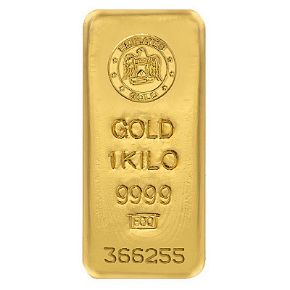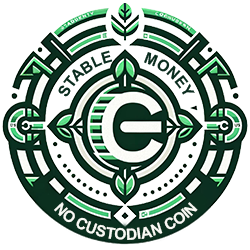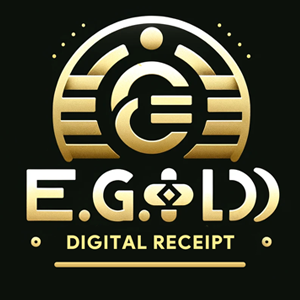
Why Testing Gold at Home is Important
Testing gold at home is a quick and cost-effective way to verify its authenticity without the need for professional services. Whether you’re assessing inherited items, new purchases, or second-hand gold, home testing methods provide valuable insights into purity and quality. These tests help you avoid counterfeits and ensure you’re making informed investment decisions.
What You Need to Test Gold at Home
To perform gold tests at home, you’ll need a few basic tools and items:
White Vinegar: For a quick and easy chemical test.
A Strong Magnet: To check for non-gold metals.
A Digital Scale: For accurate weight measurement.
A Ceramic Plate: To perform the scratch test.
Water: For the float test.
Nitric Acid (Optional): For a more advanced chemical analysis.
Who Should Perform Home Gold Tests
Home gold testing is ideal for anyone who owns or buys gold items and wants to verify their authenticity. It’s especially useful for collectors, buyers of second-hand gold, and individuals assessing inherited gold jewelry or bars.
Where to Conduct Home Gold Testing
Choose a clean, well-lit area for your testing. Use non-reactive surfaces like glass or ceramic to avoid interference from other materials. For tests involving chemicals like nitric acid, ensure proper ventilation and wear protective gloves.
When to Test Gold at Home
Testing gold at home is essential in the following situations:
Before Purchasing: To confirm the authenticity of gold items from private sellers.
After Receiving Inherited Gold: To determine the purity and authenticity of passed-down items.
When Preparing to Sell: To ensure accurate valuation before selling.
How to Test Gold at Home: Step-by-Step Methods
The Magnet Test: Gold is not magnetic. Pass a strong magnet over the gold item. If it sticks or shows any attraction, it likely contains non-gold metals.
The Vinegar Test: Place a small drop of white vinegar on the gold item. Real gold will not react, while fake gold may tarnish, discolor, or show bubbling.
The Float Test: Fill a container with water and drop the gold item into it. Authentic gold is dense and will sink immediately. If it floats, it’s likely fake.
The Scratch Test: Rub the gold item gently against an unglazed ceramic plate. Real gold will leave a golden streak, while fake gold will leave a black streak.
The Weight Test: Use a digital scale to measure the weight of the gold item. Cross-check it with standard weight charts for gold items of similar size and purity.
The Nitric Acid Test: Apply a small drop of nitric acid to the gold item. Genuine gold will not react, while fake gold may turn green or bubble. Handle this test with care and protective equipment.
Benefits of Testing Gold at Home
Convenience: No need to visit a professional jeweler or dealer.
Cost-Effective: Uses everyday items or affordable tools.
Quick Results: Most tests provide immediate feedback on authenticity.
Limitations of Home Gold Testing
While home tests are practical, they may not detect high-quality gold plating or counterfeit items made from non-reactive metals. For high-value items, combining home tests with professional verification is recommended.
How to Store Gold Safely After Testing
Once you’ve verified your gold’s authenticity, proper storage is essential to maintain its value:
Use a Fireproof Safe: Store gold items in a secure, tamper-resistant safe.
Avoid Humidity: Keep gold in a dry environment to prevent tarnishing of non-gold components.
Separate Items: Store gold separately to avoid scratches or damage from other metals.
Combining Home Tests with Professional Services
For added assurance, consider having your gold items professionally tested. Services like XRF (X-ray fluorescence) analysis and spectrometry offer precise insights into gold composition without damaging the item.
Frequently Asked Questions About Home Testing Gold
Is it safe to test gold at home? Yes, most methods like the magnet, vinegar, and float tests are non-invasive and safe for authentic gold.
What is the most accurate home gold test? The nitric acid test is highly accurate for determining gold authenticity, but handle it carefully.
Can I test gold-plated items at home? Yes, but results may vary. Additional tests like acid testing may reveal the base metal beneath the plating.
What type of vinegar should I use? White vinegar is ideal due to its high acidity and transparency.
Does gold tarnish over time? Pure gold does not tarnish. If your gold item shows signs of tarnish, it likely contains other metals.
How can I test gold without chemicals? Use the magnet, float, scratch, or weight tests for non-chemical options.
What should I do if my gold reacts to vinegar or acid? It’s likely fake or plated gold. Consult a professional jeweler for further analysis.
Do home tests damage gold? Most tests are non-invasive, but the scratch and acid tests may leave minor marks.
How often should I test my gold? Regular testing isn’t necessary unless you suspect tampering or plan to sell the item.
Can professional testing confirm home test results? Yes, professional services can provide advanced verification for high-value items.
How Home Testing Protects Your Investment
Home testing gold is a proactive way to protect your financial interests. By verifying the authenticity of your gold items, you can avoid costly mistakes, whether you're purchasing new pieces, selling old ones, or maintaining inherited treasures. This ensures that every piece in your collection is genuine and retains its value over time.
The Role of Technology in Home Gold Testing
Advancements in technology are enhancing the accuracy and convenience of home gold testing. Portable gold testers and smartphone apps are now available to provide detailed analysis of gold composition. Some tools use ultrasonic waves or spectrometry to verify gold purity without causing any damage to the item.
Example: The use of apps integrated with blockchain technology allows you to scan QR codes on certificates of authenticity, ensuring traceability from mine to market.
Why Combining Methods is Essential
No single test is foolproof, so combining multiple methods increases the reliability of your results. For instance, use the vinegar test to check for reactivity, the magnet test to rule out magnetic metals, and the weight test to confirm standard specifications. This layered approach provides a comprehensive evaluation of your gold’s authenticity.
Common Myths About Home Gold Testing
Myth 1: Real gold always sinks in water.
While true for most solid gold items, some hollow or lightweight gold-plated items might also sink, leading to misleading results.
Myth 2: Gold is always yellow.
Pure gold is naturally yellow, but its color can vary when alloyed with other metals. White gold and rose gold are examples of such variations.
Myth 3: All stamped gold is real.
Counterfeit gold items can bear fake stamps, so always combine visual inspection with additional tests.
How Home Testing Supports the Second-Hand Gold Market
For buyers and sellers in the second-hand market, home gold testing builds trust and ensures transparency. Buyers can confidently assess the value of their purchases, while sellers can provide proof of authenticity to attract potential buyers.
Expanding Your Home Testing Skills
If you're interested in mastering gold testing, consider learning more advanced techniques and acquiring specialized tools. Look for online tutorials, workshops, or books that teach methods like density testing, fire assay, or ultrasonic testing. These skills can enhance your ability to evaluate high-value gold items.
How to Store Gold Testing Tools
To ensure the longevity of your tools, store them in a dry, secure location. Clean items like digital scales and magnifying glasses after each use to prevent residue buildup. For chemicals like nitric acid, keep them in a cool, well-ventilated area, away from children and pets.
The Importance of Documentation
Once your gold items have been tested, document the results for future reference. Keep records of test dates, methods used, and any supporting certificates or receipts. This not only helps maintain trust in the authenticity of your gold but also adds value if you decide to sell or insure it later.
Future Trends in Home Gold Testing
As technology continues to evolve, home gold testing is becoming more accurate and accessible. Portable XRF analyzers and smartphone-compatible gold testing kits are making it easier than ever to verify gold purity with professional-level precision. These advancements will empower more individuals to authenticate their gold with confidence.
Home testing gold is a practical way to verify authenticity, protect your investments, and avoid counterfeit products. With simple tools and a few minutes of your time, you can confidently assess your gold’s purity and value. Whether you’re a buyer, collector, or owner, mastering these methods ensures you make informed decisions and maintain the integrity of your gold items. Combine home tests with professional verification for a comprehensive approach to gold authentication.
NOTE
This Content is the copyrighted content of EE.GOLD. All rights are reserved. You are welcome to share or use our content only by including direct links to our website. Any other form of reproduction, distribution, or use without proper attribution is strictly prohibited.
This Content is intended solely for educational purposes. The information provided does not constitute financial or investment advice.
Please note that Digital Storage Receipt, Secure Storage Solutions, and Physical Gold Sales are the only services offered by EE.GOLD.
We strictly adhere to government regulations and are firmly against all illegal financial or investment activities globally.
For further inquiries, feel free to contact us through our official channels.










.png)

